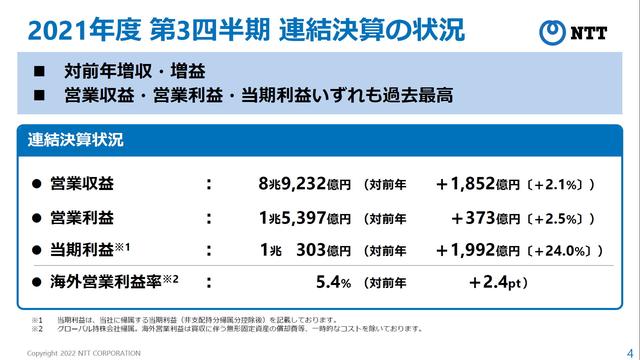Developed original AI image processing chip "Mari Silicon X", Oppo's aim is
"OPPO Find N" announced by Oppo for release in China.It is a folding smartphone that can use a 5.49 inch display when folded and a 7.1 inch display when opened.
Speaking of folding smartphones, Samsung Electronics' "Galaxy Z" series etc. are ahead, but it can be seen that OPPO Find N has researched and developed them considerably. In fact, OPPO Find N has a structure that minimizes creases by providing a space in the hinge part where the display is folded, making the creases of the display that are often worrisome in the Galaxy Z series inconspicuous.
Nevertheless, OPPO Find N can be fixed with the screen open between 50 and 120 degrees, and has a mechanism that can effectively utilize the two screens that are separated when the screen is folded. In addition, there is no need for troublesome operations when splitting the screen in the open state, and it seems that the interface has been devised, such as being able to split by a simple operation of swiping the center down with two fingers. is.
Another surprise was the price. The selling price in China is 7699 yuan (about 137,000 yen), which is a fairly cheap price for a vertically folded smartphone, which can be said to be a factor that attracted a lot of attention.
However, there is something that has attracted attention other than such a concrete product, that is "Mari Silicon X". This is an "imaging NPU", which is a chip that handles image processing when taking pictures and videos, but as the NPU (Neural network Processing Unit) says, it is focusing on the utilization of AI technology. It is a big point.
Recent smartphone cameras are mainly used for image / video software processing "computational photography" that utilizes AI technology to enable easy and beautiful photography. MariSilicon X is extremely capable of applying AI processing to RAW data of photos in real time and enabling night mode shooting of 4K video by directly mounting the NPU that accelerates the AI processing on the image processing chip. It is said that it enables advanced photography.

This Mari Silicon X is scheduled to be installed in the new model of Oppo's flagship series "Find X" announced in the first quarter of 2022. With the installation of MariSilicon X, much attention will be paid to how to improve the functions and performance of the camera, and since the Find X series is continuously introduced in Japan, it can be expected to be released in Japan. ..

Is it a stepping stone to the in-house development of "SoC" that is gaining attention?
However, if you follow the recent trends in the smartphone industry, it seems that Oppo's announcement of Mari Silicon X at this time is very significant. That is, MariSilicon X could lead to the development of Oppo's own SoC.
SoC is a chipset that integrates various functions such as CPU, GPU, and modem into one, and is the heart of today's smartphones. And in the smartphone industry, there has been a lot of interest in the trends surrounding the SoC these days.
This is shown by the SoC "Tensor" developed by Google for the "Pixel 6" series. Until now, Google has adopted Qualcomm's general-purpose SoC for its smartphones, but in the Pixel 6 series, AI processing is used to enhance functions such as photo and voice recognition using AI, which is Google's specialty. It attracted a great deal of attention because it developed its own chipset that excels in.
And this move also shows that SoCs have become important as a new differentiating factor for smartphones. Until now, displays and cameras have been the distinguishing factors for smartphones, but it is also a fact that it is difficult to differentiate by themselves in the current situation where the market is saturated.
Therefore, SoC has emerged as a new differentiating factor. As long as you are using a general-purpose SoC, you will not be able to make a big difference in performance from other companies' smartphones, but if you use an in-house developed SoC, you will be able to design with an emphasis on technologies that have strengths like Google. This is because you will be able to create a clear uniqueness with other companies.
So far, Apple has developed its own SoC "A" series to make a difference, and Huawei Technologies also developed its own "Kirin" series at its affiliated companies before being sanctioned by the United States. And we have been promoting differentiation. And since Google has clearly set out the differentiation by SoC with Tensor, SoC is expected to become one of the new competitive axes in the future.
Of course, the current Mari Silicon X is just a chip for image processing, not an SoC. However, if we can develop an SoC that incorporates MariSilicon X, we can significantly enhance computational photography and clearly show the difference from other companies, so this move may lead to the move to develop the SoC in-house. Many people see it as high, and the future movement of the company will be watched.
Masahiro Sano
Born in Fukushima Prefecture, graduated from Tohoku Institute of Technology. After working on the development of digital content as an engineer, he turned into a writer specializing in mobile phones and mobile phones. He now writes in a wide range of fields related to mobile phones, from industry trends to culture.
Click here for a list of articles by this author





![[July 6 and 7] DX realized by content cloud, advanced platform for business transformation](https://website-google-hk.oss-cn-hongkong.aliyuncs.com/drawing/article_results_9/2022/3/9/6bbafe438d78271513761788166cbf94_0.jpeg)

